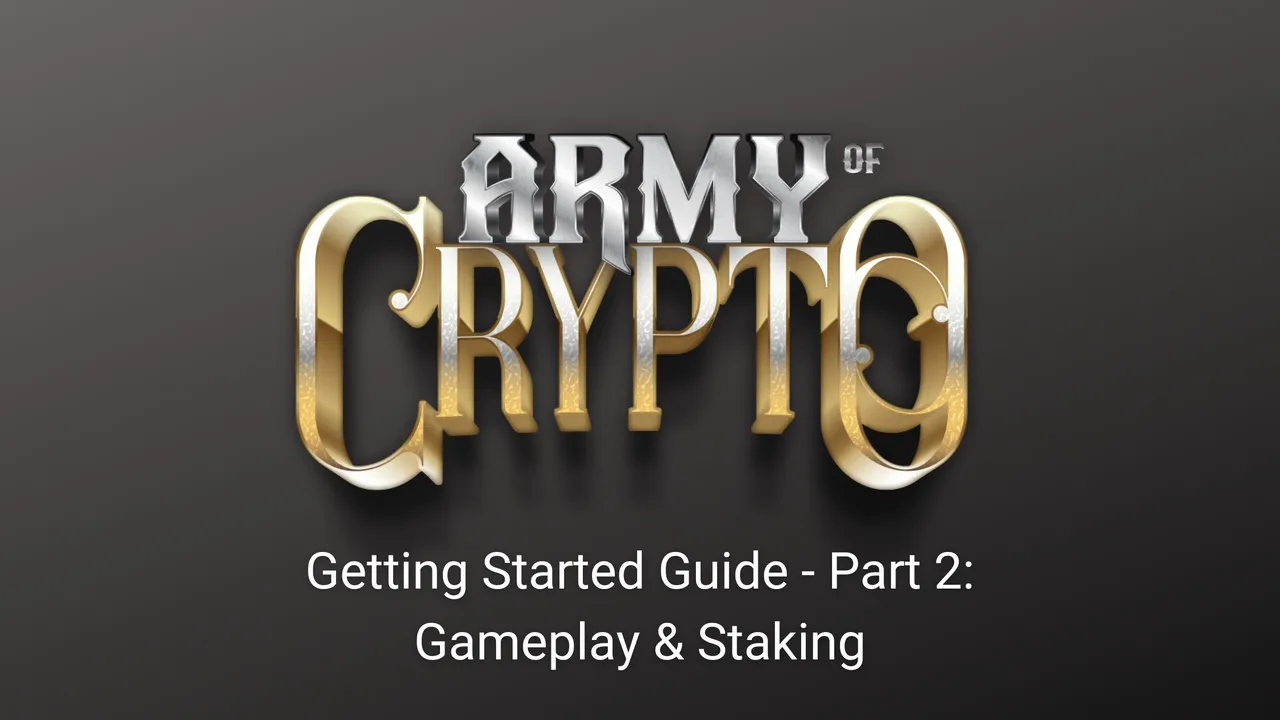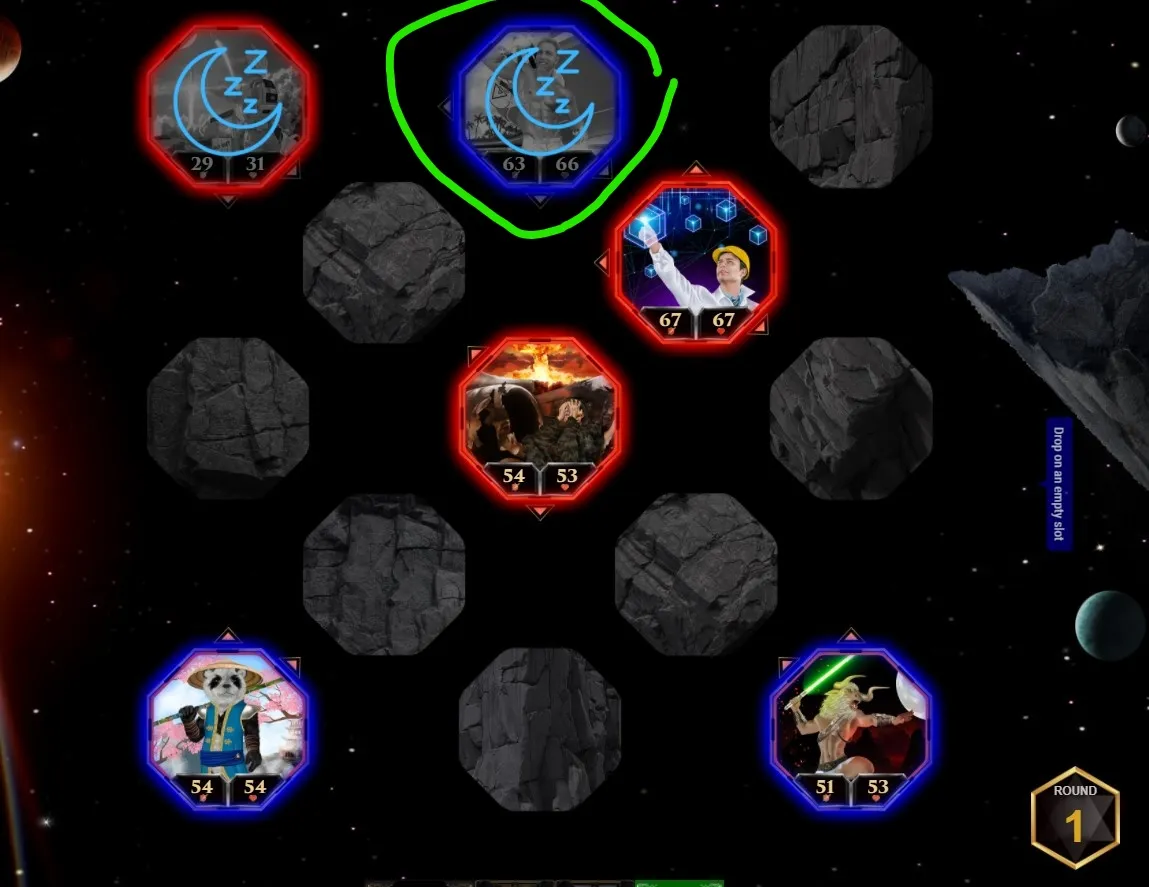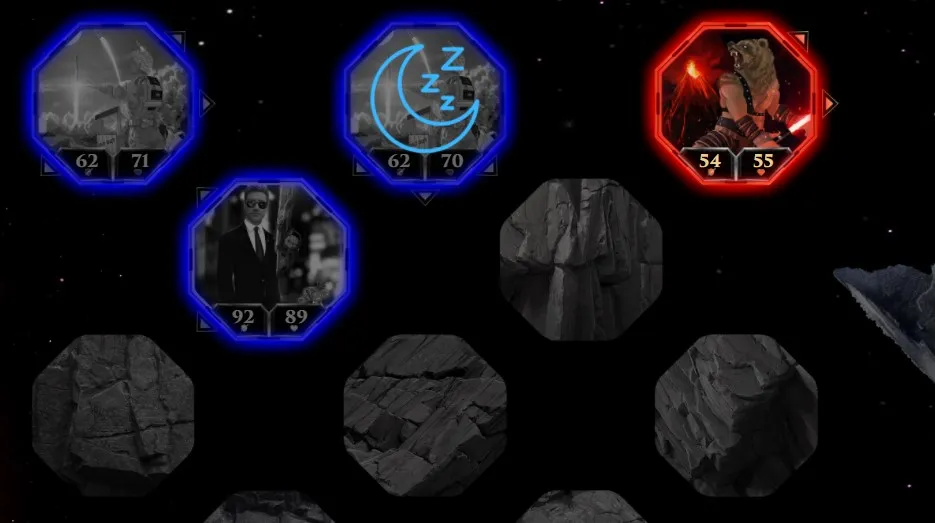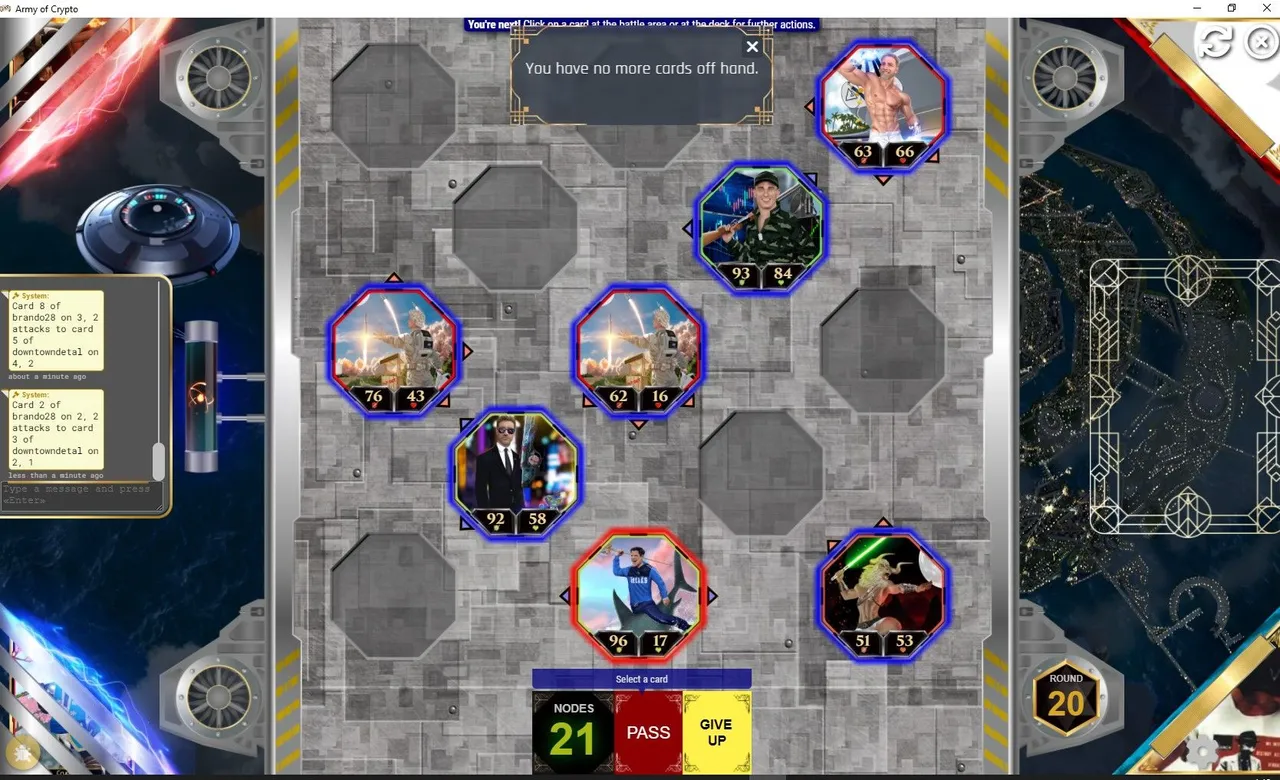
Hello, Army of Crypto players and other readers!
This is the second part of my AoC getting started -posts that I promised to deliver in the first one in which I covered tokenomics, HBD/HIVE swap, packs, etc. This time I'll dig deeper into the actual gameplay and show you how to delegate your extra ONIX tokens.
By the time of writing this, I have played 128 battles and had some awesome victories while also getting beat to a pulp many times. Nevertheless, during those matches, I've learned a thing or two that have made the experience even more fun and perhaps has made me a better player. So let's take a look at some of those tips & tricks.
Gameplay
Here below I've listed a few of my favourite strategies, or just ideas I've picked from battles.
PLACING CARDS
The card you place will be in "sleep" for the ongoing round and be available to move or attack within the next round. Therefore you don't want to put it in the reach of your opponent's card that has arrows pointed at your card - especially towards the side that has no arrows.
This is what I call a weak side and the opponent won't receive any damage when attacking you from there. Also, even if you place a card next to a card with arrows pointed at you, it's a good idea to count how much health remains after both cards have completed their attacks. I always try to put my cards on the table in a way that they can survive the attack and be able to function even with having low health.

In the picture above there's an almost perfect placement I made the other day. My opponent had just placed the card in the top left corner when I noticed this card of mine had the optimal arrow directions. It was threatening three cards while not having a single arrow pointed at it.
A situation like this can really throw off the opponent's strategies when they are kind of forced to make changes on and off the table.
SAVE IT FOR LATER (Or don't attack at all!)
Sometimes you see an opponent card that is cornered in a way that it cannot move anymore or has only one spot to move to. I usually leave these alone to wait for the end, no point in wasting an attack on these. Besides, if the match should end as a "passing contest" in which both players make 2 passes, move a card, and then make 2 passes more, cards like these are easy prey and the opponent doesn't benefit very much from them.
Also, sometimes I might not have a card for a spot that is used by an idle card so it kind of works as a "safety card" to protect a weaker side of my card - just like in this example:

All in all, probably the biggest eye-opener for me was when I realized that I don't have to attack every round.
CONQUER THE CORNERS
A very popular strategy. Corners will protect the weak side of your cards so you might want to place cards with arrows pointing toward the center. With strong three-arrow cards, you cannot be harmed without the opponent taking a hit too.
PASS
Also, you don't have to put a card on the table each time you have a chance. If you got your corners covered for example, it might be a good idea to pass the round and see what your opponent does. They might move or place a card in a spot that you can then attack with a card in your hand. You can pass two times in a row - a third time equals giving up.
COVERING EVERY SLOT
This is something I see many experienced players aiming for. The idea is to have your arrow directions covering each empty spot so that you'll be able to attack against each new card that is put on the table.
If you take a look at the picture below, and the empty slots on the table, you'll notice I have an arrow pointed at each one of them. This means that wherever my opponent places a card, I'm able to attack against it.

RUNNING AWAY
I'm not sure how to call this tactic but to your opponent, it might seem like you were running away. I do this to avoid getting completely destroyed but also to deceive the player I'm up against. I might be luring them into a spot that is in the reach of another card of mine or I could sacrifice the card that is "running away" and place another card facing the opponent's card's weak side.
Staking
I just couldn't finish up my post without writing a bit about the financial aspects of the game. This time I'll take a look at the ONIX staking opportunities.
As of today, I started to stake, or delegate, some of my ONIX coins. To do it properly the first thing I did was to watch this very helpful Onix Staking Tutorial video. As I was watching I realized that I didn't even have my Onix Web Wallet set. So, I headed to wallet.onixcoin.io, created a new wallet(very easy process), saved my key phrase and sent some ONIX to my new wallet.
I then chose the first Superstaker option, The Onixcoin Shrine, read the information, copied the address, and added the delegation - done.

DEPOSITING & WITHDRAWING
As I'm used to other staking protocols where you have to send tokens to a smart contract, I was a bit confused about ONIX delegations at first. In the picture above you can see that the fee is 100%. This is recommended to be set as 100% when creating the delegation and it means that any amount you send to your wallet address is automatically delegated. Also, you can withdraw any amount by simply sending it to another wallet without disturbing the process. Brilliant and simple system once you get the hang of it.
Another interesting thing is the reward distribution:
- Earnings distribution:
- 10% for the pool (service fee)
- 10% for the lottery
- 80% for all delegates
At least to me, the lottery system is a new one. It works like this: 10% of staking earnings are used for lottery funds. On every round, the script picks 3 delegates at random to give them a share of the earnings depending on their place:
- First place gets 50% of the lottery share.
- Second place gets 35% of the lottery share.
- Third place gets 15% of the lottery share.
Could be a nice surprise to some lucky ones and if I understood correctly, it isn't tied to how much each user is delegating.
Conclusion
Magic will change everything they say, and when looking at the magic cards I own, I think I have to agree with that one. I'm sure some of the strategies I mentioned above will still be in use but with magic cards, the number of different combinations will be astronomical.
I also think that we are going see some amazing David beats Goliath -kind of surprise outcomes as a well-placed magic card can turn the whole match around.
I have a very good feeling about the future of the Army of Crypto** and believe it can really take off along the next bull run. As I see new players joining each day I'm getting a bit torn apart between the idea of getting more packs or staking more ONIX. The thing is, with new players finding the game, the demand for both will be on the rise.
I've played way over 100 battles now and must say that I've learned most by playing and losing to way overpowered decks. Against those decks with full cards with arrows pointing in almost every direction, you will really learn how to think about every move and protect your cards.
Hopefully, you found some of these tips and tricks helpful and if you haven't played yet, I recommend to check it out because compared to many other play2earn games, AoC is a really good game.
Thank you for reading!
Links to get you started:
- Discord (really nice and welcoming community!)
- Zealy Campaign
- AOC Whitepaper
- Army of Crypto main page
- Onixcoin Wallet
DISCLAIMERS:
- Note that this is not financial advice
- Thumbnail image made with Canva
- Other pictures are from Army of Crypto